Supplementation at 1 mg Se/kg enhanced growth and nutritional quality
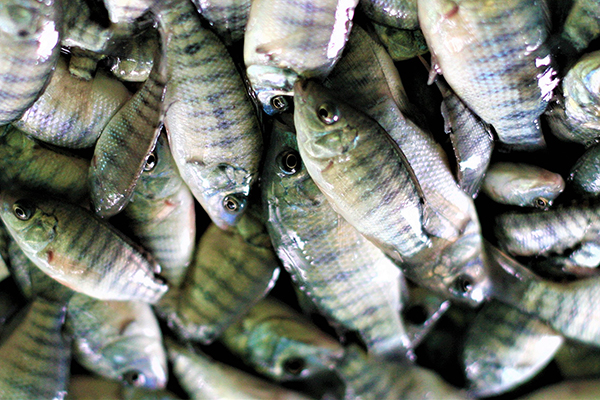
Dietary supplementation of micronutrients – essential dietary elements like iron, selenium and others required by organisms in variable quantities throughout life to coordinate several physiological functions to maintain health – in the form of nanoparticles [a particle of matter that is between 1 and 100 nanometers in diameter] as feed supplements has been reported to enhance the productivity and meat quality of fish. Nano-supplementation of micronutrients offers several advantages, such as greater bioavailability, easy absorption, enhanced utilization, and promoting cellular functions.
Selenium (Se) is a trace element with a key role in the development and immune status of organisms. Several researchers have evaluated dietary selenium supplementation (Se-Nps) for enhancing the productivity and growth performance in Prussian carps (Carassius auratus gibelio), and grass carps (Ctenopharyngodon idella), and to improve the immune status in common carps (Cyprinus carpio) and juvenile Asian sea bass or barramundi (Lates calcarifer). However, studies on the assessment of selenium nano-supplementation on the growth performance in tilapia are lacking.
This article ̶ adapted and summarized from the original publication (Moges, F.D. et al. 2022. Effects of selenium nanoparticle on the growth performance and nutritional quality in Nile Tilapia, Oreochromis niloticus. PLoS ONE 17(6): e0268348) ̶ reports on a study to evaluate the growth performance, length-weight relationship, condition factor (FCF), fatty acid analysis and nutrition quality index, and dietary levels of Se-Nps on the fingerlings of Nile tilapia (Oreochromis niloticus) to improve fish production, yields and quality.
Study setup
This research was conducted at a recirculating aquaculture system (RAS) in a greenhouse at the Addis Ababa University (AAU) in Ethiopia. The dietary selenium nanoparticles were prepared at the Nano Lab., School of Applied Science, KIIT University, India. Control and basal diets were prepared with fishmeal, soya bean, corn, wheat, CMC (carboxymethyl cellulose) sodium salt and multivitamins. Dietary Se-Nps was mixed with the basal feed and all feeds extruded into pellets. The experimental supplement inclusions tested were 0.5, 1.0 and 2.0 mg Se-Nps/kg basal feed, and fish were fed twice daily during the trial.
Two-month-old tilapia fingerlings of the same cohort with an average body weight of 2.5 grams and 4 cm in length reared at the AAU RAS facility were randomly selected and stocked into the research RAS set-up at a stocking density of 50 fish per aquarium. The fingerlings were acclimatized in the recirculating system for two weeks. Unhealthy fish and dead individuals were removed and the stocking density was reduced to 40 healthy fish per aquarium. After completing the acclimatization period, the fish were raised for a total of eight weeks and various data collected for analysis.
For detailed information on the experimental design and fish husbandry; and data collection and analyses, refer to the original publication.
Results and discussion
The use of nanoparticles of trace elements is a promising approach for feed supplementation in several species of fish, which serves as a handy way of delivery and for easy availability to the fish. Results of our study demonstrated that the administration of a 1 mg/kg Se-Nps supplementation resulted in significantly higher weight gain (> 210 percent) compared to other groups, which was in line with other studies performed in crucian carp and rainbow trout. Selenium is a vital and key element of fish nutrition and is essential for the functioning of an array of Se-carrying proteins, called sialoproteins. Nanoselenium has improved bioavailability because of its extraordinarily small size, such that it can be easily absorbed and be readily uptaken by the cells, thereby enhancing metabolic and physiological activities.
However, some studies reported enhanced growth performance at higher Se-Nps supplementation dose, such as at 3.67 mg/kg Se inclusion in African catfish. On the contrary, optimum Se-Nps dose concentration was low for rainbow trout (0.38 mg/kg), channel catfish (0.25 mg/kg), and for groupers (0.77 mg/kg). Such findings demonstrate that the optimum dose of Se-Nps supplementation for enhancing growth and productivity varies with fish type, which could be attributed to the bioaccumulation or bioavailability of Se inside the fish tissues.
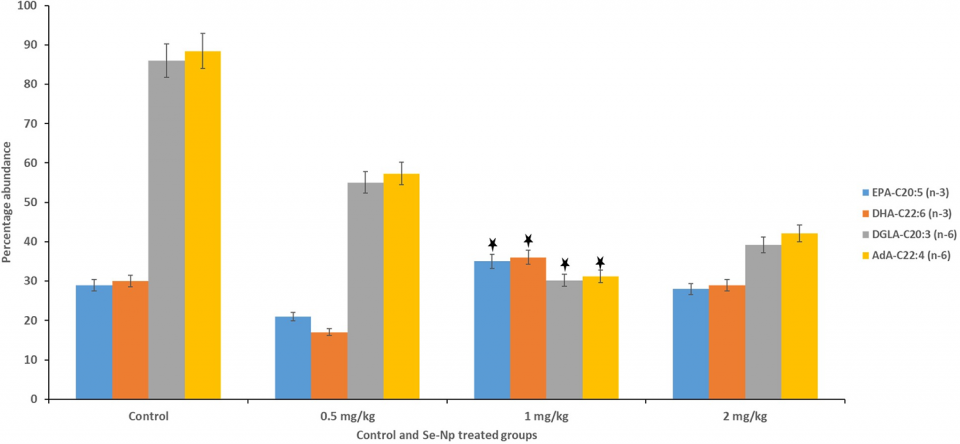
In our study, fish fed with 1 mg/kg Se-Nps inclusion showed higher levels of DHA and EPA, in addition to significantly high omega-3 content (n-3 = 9.37) in comparison to other treatments and the control, which could be attributed to the effect of Se-Nps supplementation at the optimum concentration (1 mg/kg). These findings were in agreement with previous studies, which reported that Se-Nps was effective in improving the productive performance and activity of enzymes responsible for improving the fatty acid profile and antioxidative potential. In addition, n-3/n-6 ratios, which depict the nutritional quality indices, were relatively low in the treatment groups of this study, which were in line with previous studies, and have been shown to possess health-promoting effects in Nile Tilapia.
Overall, our results revealed the growth-promoting effects and the improved nutritional quality of Nile tilapia with dietary nanoselenium supplementation. Nanonutrient supplementation is considered one of the most promising approaches for enhancing aquaculture production. Our data also showed that Se-Nps treated Nile tilapia at specific doses had higher levels of PUFAs . This application of nanonutrients could be expanded to a variety of commercial fish for improving the overall well-being of the fish and improving farmed seafood production.
Perspectives
Results of this study showed that nanoselenium supplementation enhanced the growth performance and nutrition quality of Nile tilapia at a specific dose. Selenium exhibits diverse roles in the productivity and immune status of fish; hence, nanoselenium supplementation increased the bioavailability and overall growth parameters like length, weight, omega-3 fatty acid content, and overall growth of tilapia.
These findings highlight the utility of nanotechnology for the enhanced production of Nile tilapia that could be utilized for meeting the increasing demand of malnutrition across the global population. Industries related to fish farming could explore the development of nano-feed supplementations with nanoselenium and other micronutrients at optimum levels for enhancing animal growth performance and productivity.
Now that you've reached the end of the article ...
… please consider supporting GSA’s mission to advance responsible seafood practices through education, advocacy and third-party assurances. The Advocate aims to document the evolution of responsible seafood practices and share the expansive knowledge of our vast network of contributors.
By becoming a Global Seafood Alliance member, you’re ensuring that all of the pre-competitive work we do through member benefits, resources and events can continue. Individual membership costs just $50 a year.
Not a GSA member? Join us.
Author
-
Dr. Biswadeep Das
Corresponding author
School of Biotechnology, Kalinga Institute of Industrial Technology, KIIT Deemed to Be University, Bhubaneswar, Odisha, India
Tagged With
Related Posts
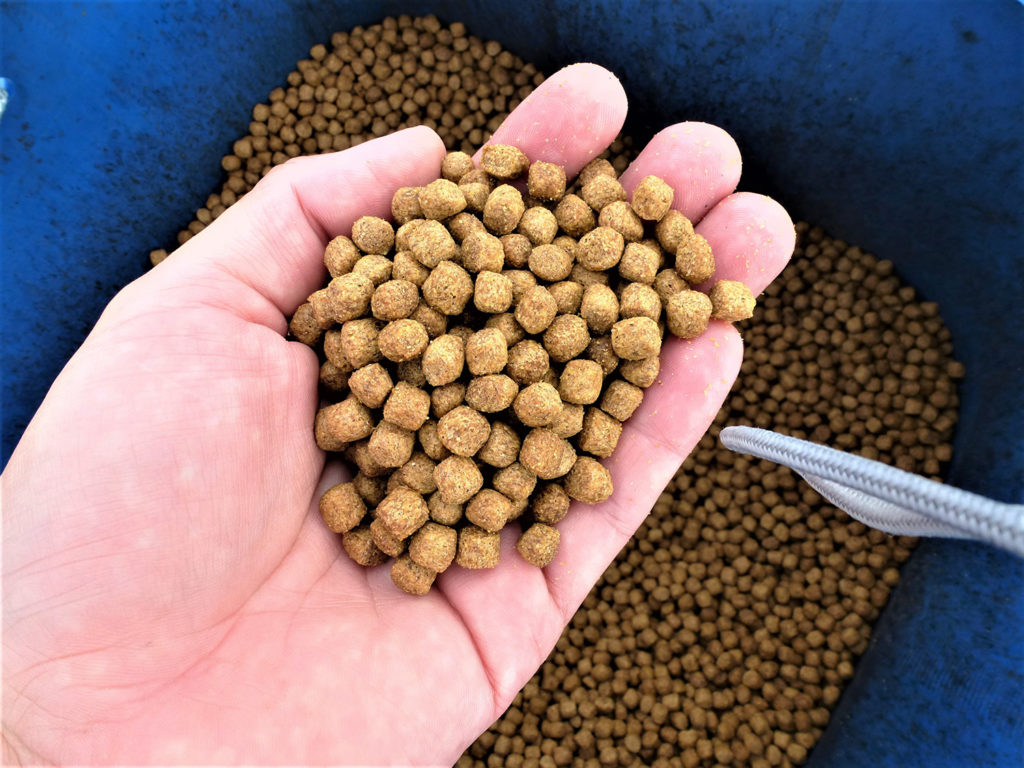
Health & Welfare
Advances in tilapia nutrition, part 2
Nutrition has an important role on growth, performance and flesh quality of tilapia. Part two of this two-part series looks into mineral supplementation and feeding strategy.
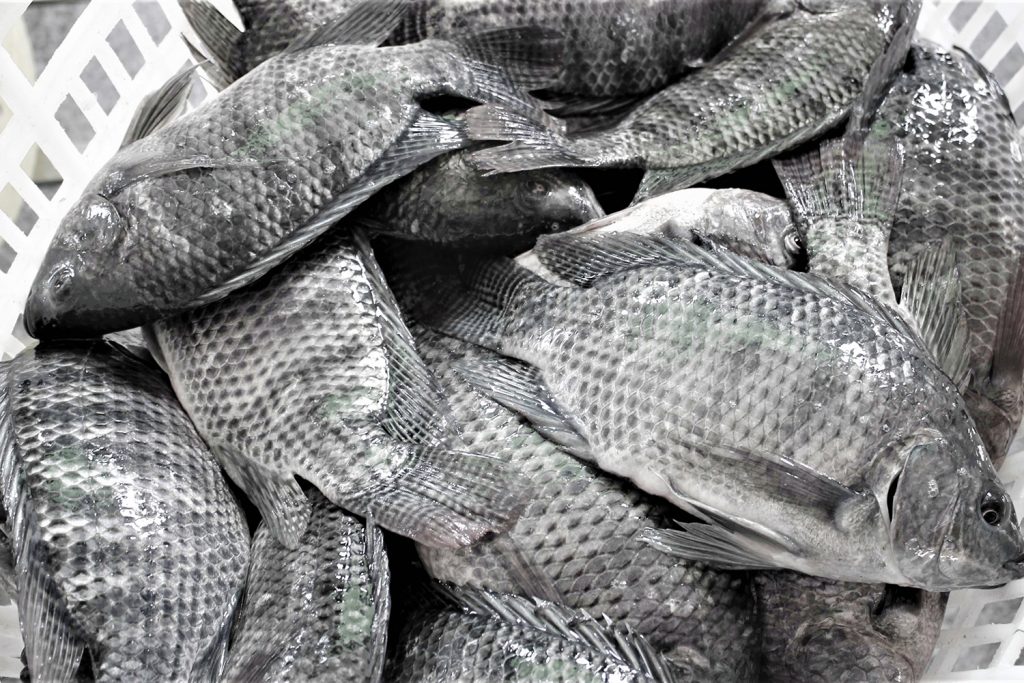
Health & Welfare
How feed and water additives are used on Egypt’s Nile tilapia farms
Trends in the use of additives in small-scale fish farming in Egypt show the need to establish costs and benefits and promote their appropriate use.
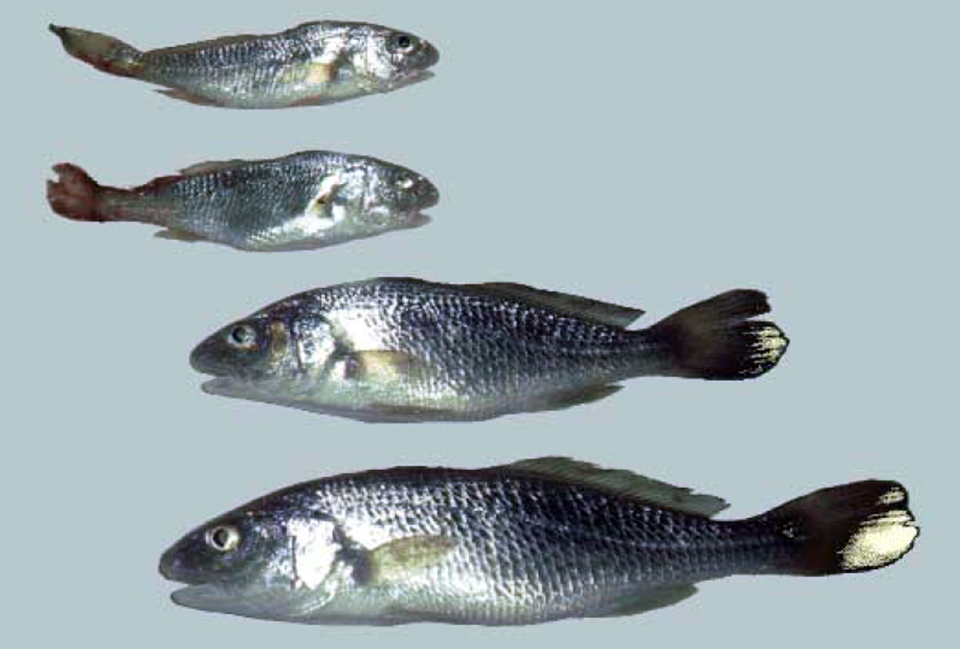
Health & Welfare
Vitamins: Varied factors affect health, disease resistance effects in fish
Technical literature varies in reporting the ability of vitamins to improve fish survival and resistance to disease following infection with pathogens.
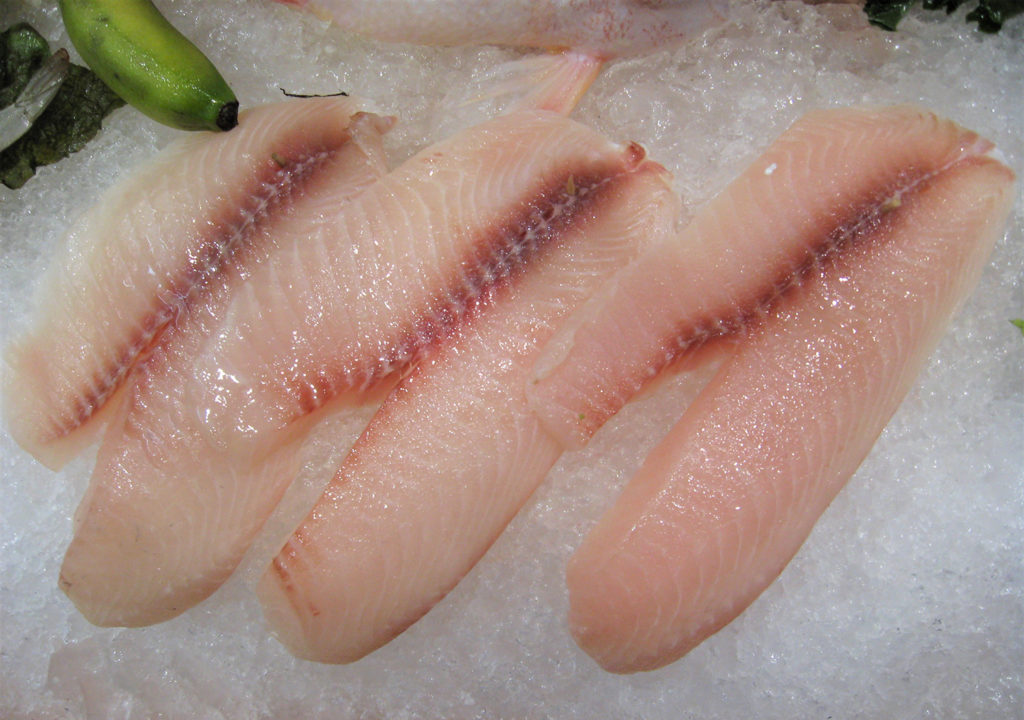
Intelligence
Trace minerals in tilapia fillets, part 1
Part 1 of this study highlighted the importance of minerals in the diet of fish for meeting micronutrient requirements in the human diet.



